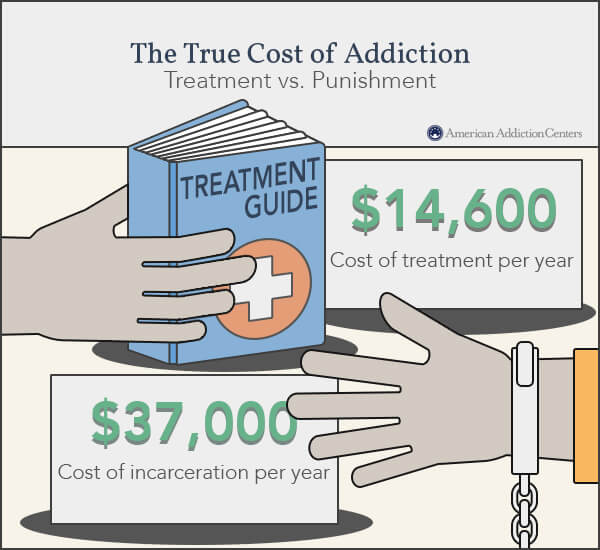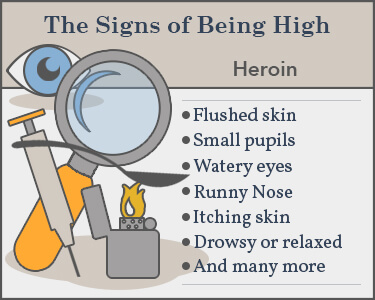How the Brain Reacts to Natural Benefits & Drugs (NIDA) Research studies have actually revealed that constant substance abuse seriously restricts a person's capacity to feel satisfaction. at all. 6 Gradually, drug use leads to much smaller releases of dopamine. That suggests the brain's benefit center is less receptive to satisfaction and satisfaction, both from drugs, along with from every day sources, like relationships or activities that a person once delighted in.
7 Withdrawal occurs when a person who's addicted to a substance stops taking it entirely: either in an attempt to quit Additional resources cold turkey, or since they don't have access to the drug. Somebody in withdrawal feels definitely awful: depressed, despondent, and physically ill. Brain imaging studies from drug-addicted individuals show physical, quantifiable changes in locations of the brain that are important to judgment, choice making, finding out and memory, and habits control.
8 A promising trainee may see his grades slip. A bubbly social butterfly may all of a sudden have problem getting out of bed. A credible brother or sister may start taking or lying. Behavioral changes are straight connected to the drug user's changing brain. Yearnings take over. These cravings are unpleasant, continuous, and distracting.
Specifically offered the strength of withdrawal symptoms, the body wishes to avoid being in withdrawal at all expenses. how to help a family member with drug addiction. "We need to tell our children that one beverage or one pill can lead to a dependency. Some of us have the genes that increase our risk of addiction, even after simply a few usages.
But at some time during usage, a switch gets turned within the brain and the choice to utilize is no longer voluntary. As the Director of the National Institute on Substance abuse puts it, it's as if an addicted individual's brains has actually been pirated. Anybody who attempts a substance can end up being addicted, and research reveals that the bulk of Americans are at danger of developing addiction.
Some Known Facts About What Leads To Drug Addiction.
What's more, 42% of 1718 year olds report that they've tried illicit drugs. 10 After preliminary direct exposure, no one selects how their brain will react to drugs or alcohol. So why do some individuals establish addiction, while others do not? The newest science indicate three main factors. Scientific research has shown that 5075% of the likelihood that an individual will develop dependency comes from genetics, or a household history of the health problem.
Research study reveals that growing up in an environment with older adults who use drugs or take part in criminal behavior is a risk aspect for dependency. Protective elements like a stable house environment and encouraging school are all shown to reduce the threat. Addiction can establish at any age. But research reveals that the previously in life a person attempts drugs, the more most likely that person is to establish addiction.

Introducing drugs to the brain throughout this time of growth and change can trigger serious, long-lasting damage. Addiction is not a choice. It's not a moral failing, or a character defect, or something that "bad people" do. Most scientists and specialists concur that it's a disease that is caused by biology, environment, and other aspects.
A person can't reverse the damage drugs have actually done to their brain through sheer willpower. Like other persistent illnesses, such as asthma or type 2 diabetes, continuous management of addiction is needed for long-term healing. This can consist of medication, behavior modification, peer-support, and way of life modifications. why is drug addiction a disease.
Drug addiction, likewise called compound use condition, is an illness that affects a person's brain and habits and results in an inability to manage using a legal or controlled substance or medication. Compounds such as alcohol, cannabis and nicotine also are thought about drugs. When you're addicted, you may continue utilizing the drug in spite of the damage it triggers.
A Biased View of How Can Family Members Help Drug Addiction
For others, particularly with opioids, drug addiction begins with exposure to recommended medications, or getting medications from a friend or relative who has been recommended the medication. The danger of addiction and how fast you end up being addicted differs by drug. Some drugs, such as opioid pain relievers, have a higher risk and cause addiction quicker than others.
Quickly you may require the drug simply to feel good. As your substance abuse boosts, you might find that it's increasingly hard to go without the drug. Efforts to stop substance abuse may cause extreme yearnings and make you feel physically ill (withdrawal signs). You might require assistance from your doctor, family, buddies, support system or an orderly treatment program to conquer your drug dependency and stay drug-free.
Possible signs that your teen or other member of the family is using drugs include: regularly missing school or work, a sudden disinterest in school activities or work, or a drop in grades or work efficiency lack of energy and inspiration, weight loss or gain, or red eyes lack of interest in clothing, grooming or looks exaggerated efforts to bar member of the family from entering his or her space or being secretive about where she or he opts for good friends; or extreme modifications in behavior and in relationships with household and good friends sudden ask for cash without a reasonable explanation; or your discovery that cash is missing out on or has actually been taken or that products have actually vanished from your home, suggesting possibly they're being offered to support drug use Symptoms and signs of substance abuse or intoxication may vary, depending upon the kind of drug.
Individuals utilize marijuana by cigarette smoking, eating or breathing in a vaporized type of the drug. Cannabis often precedes or is utilized in addition to other substances, such as alcohol or illegal drugs, and is frequently the first drug tried - how to beat drug addiction. Indications and signs of recent usage can include: A sense of bliss or sensation "high" A heightened sense of visual, auditory and taste perception Increased high blood pressure and heart rate Red eyes Dry mouth Decreased coordination Difficulty concentrating or remembering Slowed response time Stress and anxiety or paranoid thinking Cannabis odor on clothes or yellow fingertips Exaggerated yearnings for specific foods at uncommon times Long-term (chronic) usage is often related to: Decreased mental sharpness Poor efficiency at school or at work Minimized number of friends and interests Two groups https://6044cc6c77bb4.site123.me/#section-6072fb9aba9f6 of miracle Click here to find out more drugs artificial cannabinoids and replaced or artificial cathinones are unlawful in most states.
Artificial cannabinoids, also called K2 or Spice, are sprayed on dried herbs and then smoked, however can be prepared as a herbal tea. In spite of producer claims, these are chemical substances instead of "natural" or harmless items. These drugs can produce a "high" comparable to cannabis and have actually ended up being a popular however hazardous alternative.

How To Stop Drug Addiction On Your Own Fundamentals Explained
Bundles are typically labeled as other items to prevent detection. Regardless of the name, these are not bath products such as Epsom salts. Substituted cathinones can be eaten, snorted, inhaled or injected and are extremely addictive. These drugs can trigger severe intoxication, which leads to unsafe health effects or perhaps death.
They're often utilized and misused in look for a sense of relaxation or a desire to "change off" or forget stress-related thoughts or feelings. Examples include phenobarbital and secobarbital (Seconal). Examples include sedatives, such as diazepam (Valium), alprazolam (Xanax), lorazepam (Ativan), clonazepam (Klonopin) and chlordiazepoxide (Librium). Examples include prescription sleeping medications such as zolpidem (Ambien, Intermezzo, others) and zaleplon (Sonata).